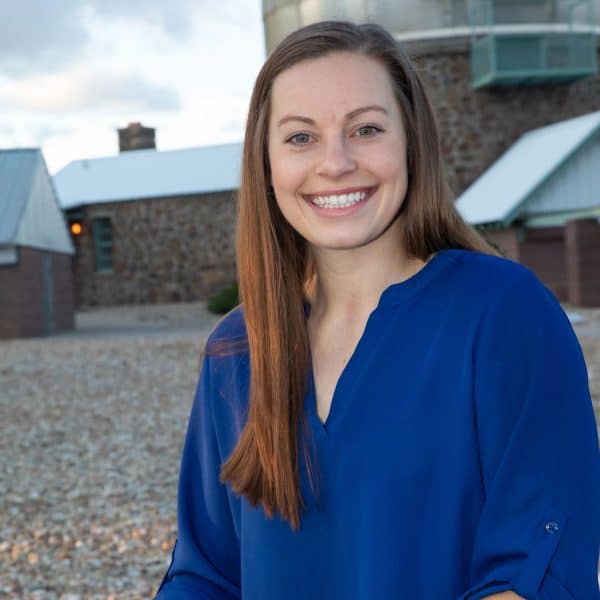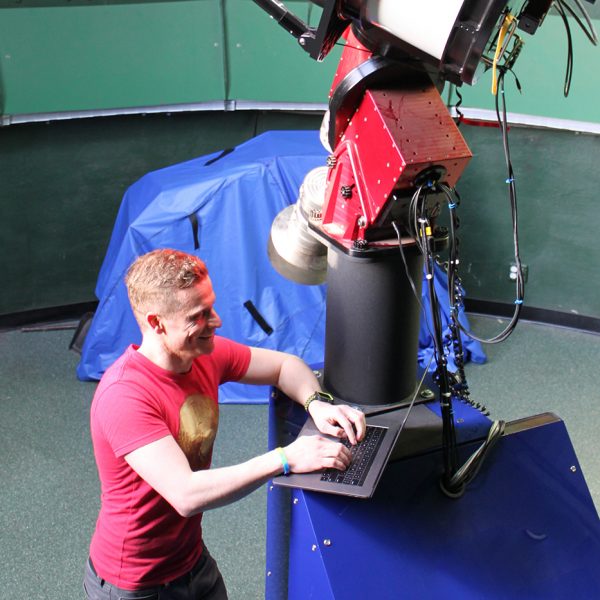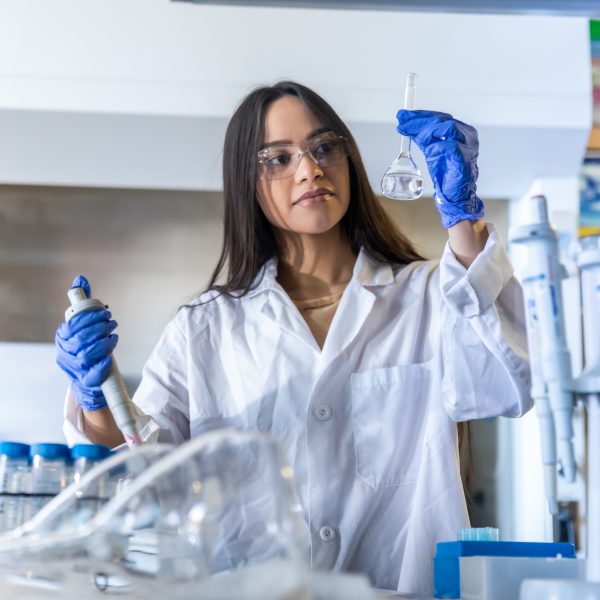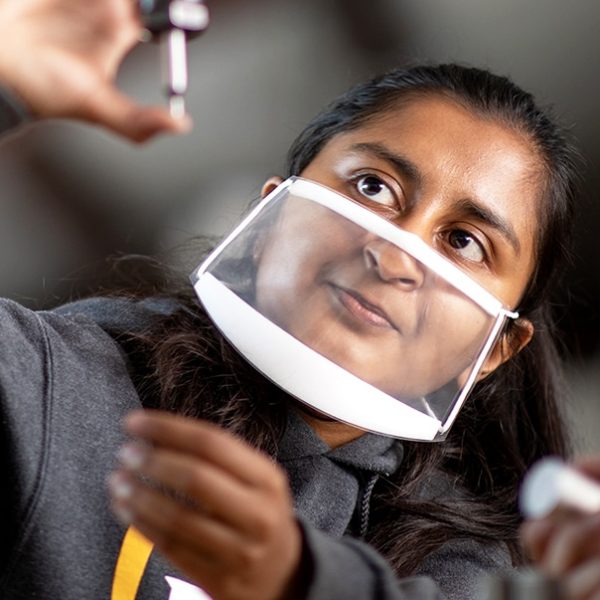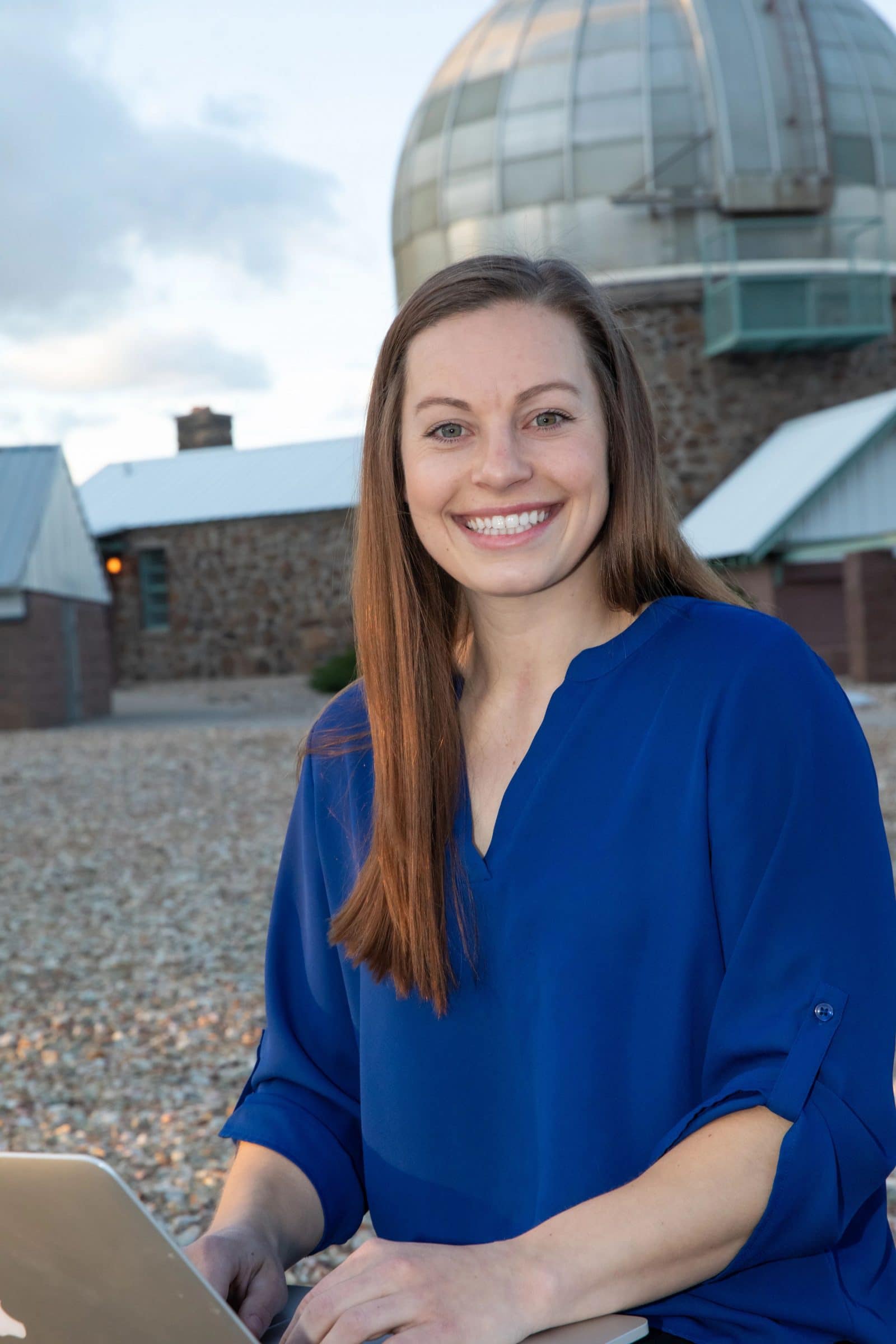
PhD student Annika Gustafsson studies comets and asteroids. She recently received the Amelia Earhart Fellowship for her work in space sciences.
Annika Gustafsson likes to do “many, many things.” In 2016, Annika was among the first group of four students in Northern Arizona University’s Astronomy and Planetary Science doctoral program. She is now working on three projects toward her PhD.
Initially a competitive gymnast, Annika became interested in astronomy after participating in middle school science camps in her hometown of Santa Cruz, California. While an undergraduate at the University of Oregon, she completed her Research Experience for Undergraduates (REU) at Lowell Observatory and became acquainted with local astronomers. Her research was guided by Lowell Observatory astronomers Nick Moskovitz and Stephen Levine. Northern Arizona University’s Astronomy and Planetary Science Department Associate Professor, David Trilling, was the Director of the REU program.
During her REU at Lowell, she talked with Moskovitz about research options for graduate school. Should she stay with her undergraduate interest in black holes and galaxies or switch to planetary science—the study of objects within our solar system?
Moskovitz explained planetary science was a relatively small field, and Flagstaff was a focal point for that area of research. Annika chose to switch to planetary science and has both Moskovitz and Trilling as advisors. “I consider Flagstaff kind of the mecca of planetary science in that there are so many resources in Flagstaff,” Annika said. “And as a student, you’re really lucky to be here, because you have so many opportunities from all of the collaborators you have at Lowell and at NAU.”
Flagstaff connections aid research
That Flagstaff network is paying off for her thesis projects, including getting an instrument on the Lowell Discovery Telescope ready for research and studying small solar system bodies: comets and asteroids, specifically those that come close to Earth.
She has been fine-tuning one of the instruments attached to the Lowell Discovery Telescope—the Near-Infrared High Throughput Spectrograph or NIHTS (pronounced “nights”)—to get it ready for research. NIHTS will help with her asteroid studies.
“It’s designed to do what I want to do well. There’s a similar instrument on the NASA Infrared Telescope Facility on Mauna Kea in Hawai`i,” Annika said. “Being able to have an instrument with similar capabilities at the Lowell Discovery Telescope is very advantageous for Flagstaff.”
Having access to the instrumentation, to the telescope, to the people, to the community is something that’s extremely unique about Flagstaff. This has made my experiences as a grad student, I think, really truly amazing.
In 2018, Annika took advantage of the close approach of four comets and studied them with Moskovitz, Lowell Astronomer Dave Schleicher (who specializes in comet research), and Silvia Protopapa, a Principal Scientist with the Southwest Research Institute in Boulder, Colorado. It was a timely opportunity, Annika explained, as there wouldn’t be another set of known comets making as close of an approach for 40 or 50 years. Annika’s research focused on the composition of the comet’s coma—the gas, water ice, and dust coming off the nucleus of the comet. “How does that change our understanding of how the comet formed, what the nucleus looks like? And the bigger picture is where did it form in the solar system, and how does that change our understanding of solar system formation?”
Annika’s primary research topic is asteroids. She studies surface characteristics of asteroids through telescope data, including NIHTS, and laboratory data of meteorites that have landed on Earth. She is also interested in comparing data from asteroid missions (that collect data by landing on the asteroids) with data collected from Earth observations. One aspect of her research is studying small asteroids that may collide with Earth. “The smallest asteroids are hardest to detect,” she said. “And so better understanding how the surface properties of those asteroids change, as a function of size, will help us better assess hazard impacts and how worried we need to be about them.”
For her work in space sciences, Annika received Zonta International’s prestigious Amelia Earhart Fellowship, 2020-21, worth $10,000. This international award is awarded annually to up to 30 women pursuing a doctorate in Aerospace Engineering or Space Sciences.
Annika has valued her experiences at NAU and appreciates the connections she has made in Flagstaff.
“Having access to the instrumentation, to the telescope, to the people, to the community is something that’s extremely unique about Flagstaff,” she said. “This has made my experiences as a grad student, I think, really truly amazing and unique.”

